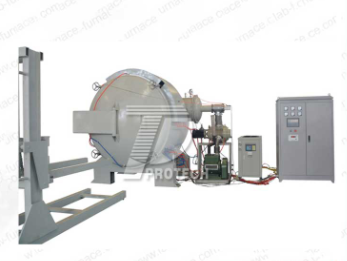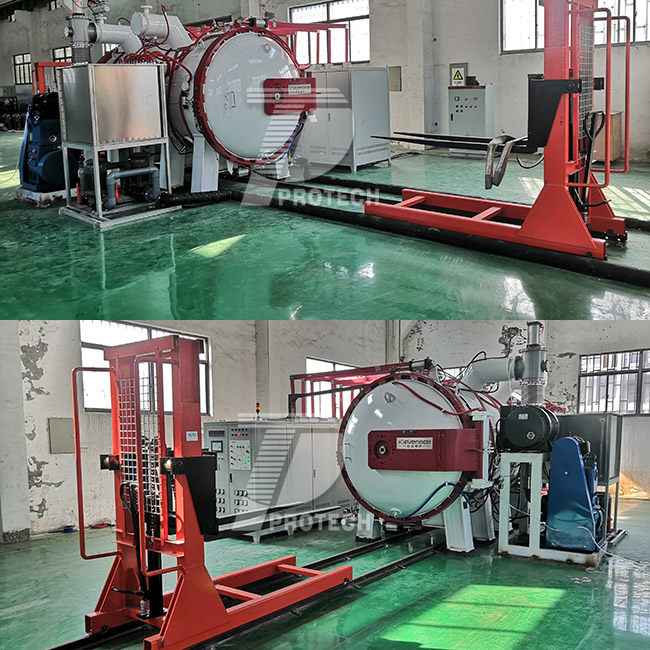


NEWS
The selection of a large vacuum sintering furnace is a complex process that requires consideration of multiple factors to ensure that the selected equipment can meet production needs and ensure product quality. Let's take a detailed look at what to pay attention to when choosing a large vacuum furnace!

Industrial vacuum sintering furnace (click on the picture to view product details)
1. Clearly define production needs and objectives
Material type: Consider the type of material that needs to be sintered, including its composition, shape, size, etc.
Batch size: Determine the required sintering batch size based on the production scale.
Sintering temperature: Understand the maximum temperature and temperature range required for sintering.
Sintering atmosphere: Determine whether a specific sintering atmosphere is required, such as inert gas, reducing gas, etc.
2. Heating method and furnace type selection
Heating method: Large vacuum sintering furnaces are generally electrically heated. Electric sintering furnaces have the advantages of high energy utilization efficiency and good environmental performance, and are suitable for small batch and high-precision sintering requirements.
Furnace type selection: There are three common types: box type, tube type, and bell type. The box type sintering furnace has a simple structure, easy operation, and is suitable for sintering various materials; Tube type sintering furnace is suitable for sintering slender rod-shaped or tubular materials; Bell type sintering furnaces are suitable for large-scale, continuous production.
3. Vacuum system performance
Vacuum degree: Select equipment with high vacuum degree to ensure the quality and performance of sintered materials. Extreme vacuum degree and leakage rate are important indicators for measuring the performance of vacuum systems.
Vacuum pump configuration: Select the appropriate type of vacuum pump according to process requirements, such as rotary vane pump, Roots pump, molecular pump, etc. At the same time, consider the working efficiency and lifespan of the vacuum pump.
4. Control system performance
Automation level: Choose equipment with high automation level to improve production efficiency and reduce manual operation errors.
Monitoring and recording function: The control system should have real-time monitoring and recording functions for process parameters such as temperature and vacuum degree, in order to analyze and optimize the production process.
5. Auxiliary devices and safety measures
Auxiliary devices: Consider whether it is necessary to equip auxiliary devices such as atmosphere control devices and cooling systems according to actual needs. These devices can further enhance the performance and adaptability of the equipment.
Security measures: Select equipment with comprehensive security protection functions to ensure the safety of operators and the stable operation of equipment.
6. Manufacturer and after-sales service
Professional level and technical strength: Choose manufacturers with rich experience and professional skills to ensure the quality and performance of the equipment.
After sales service: Consider whether the manufacturer's after-sales service is comprehensive, including support for equipment maintenance, replacement of vulnerable parts, and other aspects.

Industrial graphite vacuum furnace (click on the image to view product details)
Overall, the selection of large vacuum sintering furnaces requires comprehensive consideration of multiple factors. By clarifying production requirements and purposes, selecting appropriate heating methods and furnace types, paying attention to vacuum system performance, control system performance, auxiliary devices and safety measures, and taking into account factors such as the manufacturer's professional level and after-sales service, we can ensure that the selected equipment can meet production needs and ensure product quality.Click to learn more vacuum sintering furnaces! Or click on online customer service to learn more about product information!
Leave A Message